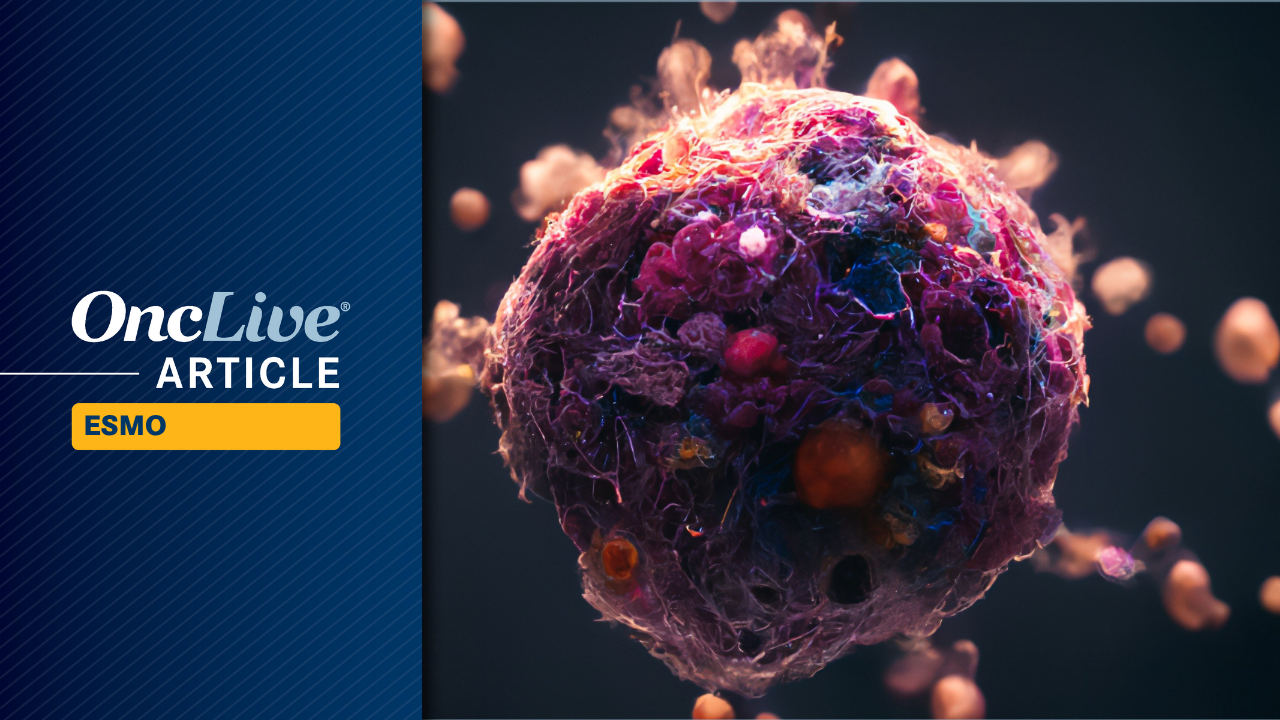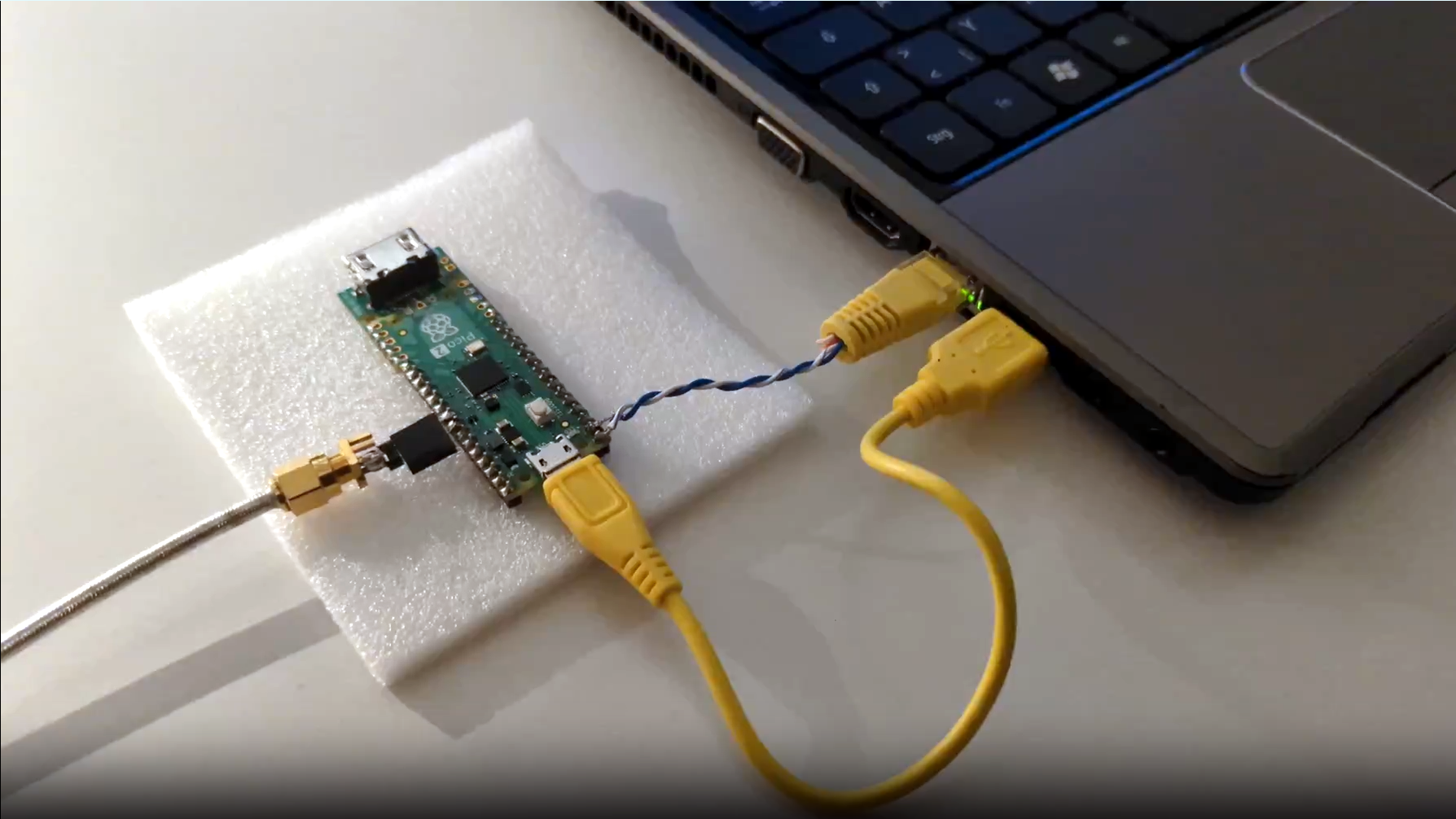The Raspberry Pi Pico is a very capable board, but it’s still a surprise to see bit-banged 100 MBit/s Fast Ethernet implemented on one. [Steve]’s Pico-100BASE-TX library allows an RP2040 (or RP2350) microcontroller to…
Blog
-

Orionids to peak Monday night with as many as 20 meteors per hour
The Witch Head Nebula, pictured in October 2008, is in the constellation Orion, from which the Orionids get their name. The Orionids will reach their annual peak Monday and Tueday. File Photo courtesy of NASA | License PhotoThe night sky will…
Continue Reading
-

New guidance from ECDC and EACS aims to raise standards of HIV care, focusing on lifelong health
The European Centre for Disease Prevention and Control (ECDC) and the European AIDS Clinical Society (EACS) have released two new additions to a series of European standards of care for HIV, which cover key aspects of HIV prevention, testing and…
Continue Reading
-

Miura/Kihara win pairs event by massive 21.49-point margin as Stellato-Dudek/Deschamps struggle to regroup after early mistake
Japan’s Miura Riku and Kihara Ryuichi turned their Grand Prix de France debut golden as they won the pairs skating competition on Saturday, 18 October.
The reigning figure skating world champions scored 139.71 points for their free program to…
Continue Reading
-

Parkour Champions Codes (October 2025)
Update: added new Parkour Champions codes on October 19, 2025
Assassin’s Creed and Titanfall 2 are a few of my favorite all-time video games due to their movements, especially parkour. While Roblox has many good games, no studios…
Continue Reading
-
Just a moment…
Just a moment… This request seems a bit unusual, so we need to confirm that you’re human. Please press and hold the button until it turns completely green. Thank you for your cooperation!
Continue Reading
-

T-DXd Superior to T-DM1 in Improving IDFS/DFS in Residual HER2+ Breast Cancer | Targeted Oncology
Interim data from the phase 3 DESTINY-Breast05 trial (NCT04622319) shared at the 2025 European Society for Medical Oncology (ESMO) Congress showed improved invasive disease–free survival (IDFS) with fam-trastuzumab deruxtecan-nxki (T-DXd; Enhertu) gin compared with ado-trastuzumab emtansine (T-DM1; Kadcyla) in patients with high-risk, HER2-positive primary breast cancer with residual invasive disease following neoadjuvant therapy.1
Treatment with T-DXd (n = 818) led to a 53% reduction in the risk of invasive disease or death compared with T-DM1 (n = 817; HR, 0.47; 95% CI, 0.34–0.66; P < .0001). The 3-year IDFS rates were 92.4% (95% CI, 89.7%–94.4%) with T-DXd vs 83.7% (95% CI, 80.2%–86.7%) with T-DM1.
“Patients benefited [from T-DXd] irrespective of age cohorts, region of accrual, hormone receptor status, disease status at presentation, post-therapy pathologic nodal status, and dual or single HER2-targeted therapy, as well as irrespective of the sequence or usage of radiation therapy for that minority of patients who did not receive [radiation] treatment,” Charles E. Geyer Jr., MD, said in the presentation.
Geyer is a professor of medicine and chief of the Division of Malignant Hematology and Medical Oncology at the University of Pittsburgh Medical Center Hillman Cancer Center in Pennsylvania.
What Was the Rationale for DESTINY-Breast05?
Previously, the phase 3 KATHERINE trial (NCT01772472 ) showed that T-DM1 improved IDFS (HR, 0.50; 95% CI, 0.39-0.64; P < .0001) and overall survival (OS; HR, 0.66; 95% CI, 0.51-0.87; P = .0027) compared with trastuzumab in patients with HER2-positive early breast cancer with residual invasive disease after neoadjuvant therapy.2 However, patients with advanced locoregional disease or positive nodal status following neoadjuvant therapy had 3-year IDFS rates of 76% and 83%, respectively; the 7-year IDFS rates were 67% and 72%, respectively.1 These data reinforce the unmet need for improved post-neoadjuvant treatment in this population, Geyer emphasized.
What Was the Study Design?
This global, multicenter, randomized, open-label trial enrolled patients with residual invasive disease in the breast and/or axillary lymph nodes after neoadjuvant chemotherapy with a HER2-directed therapy. Patients needed to present with high-risk disease prior to neoadjuvant therapy, defined as inoperable early breast cancer or operable early breast cancer with axillary node–positive disease after neoadjuvant therapy. Patients also needed to have centrally confirmed HER2-positive disease and an ECOG performance status of 0 or 1. Enrolled patients were stratified by extent of disease at presentation (inoperable vs operable), type of HER2-targeted neoadjuvant therapy received (single vs dual), hormone receptor status (positive vs negative), and post-neoadjuvant therapy pathologic nodal status (positive vs negative).
Patients were randomly assigned 1:1 to receive intravenous (IV) T-DXd at 5.4 mg/kg every 3 weeks for 14 cycles, or IV T-DM1 at 3.6 mg/kg every 3 weeks for 14 cycles. Treatment was followed by a 40-day safety follow-up period.
Notably, concomitant adjuvant endocrine therapy was allowed per local practice protocols. Additionally, radiotherapy, if administered, could be initiated concurrently with study therapy or completed prior to the initiation of study therapy per the investigator. An interstitial lung disease (ILD) monitoring program was required for patients who received radiotherapy.
IDFS served as the primary end point, with disease-free survival (DFS) as a key secondary end point. Other secondary end points included OS, distant recurrence–free interval (DRFI), brain metastasis–free interval (BMFI), and safety.
What Did the Patient Population Look Like?
In total, 1635 patients were randomly assigned to receive T-DXd (n = 818) or T-DM1 (n = 817). In the T-DXd arm, 806 patients received treatment. A total of 27.7% of patients in this arm discontinued treatment due to adverse effects (AEs; 17.9%), patient withdrawal (7.4%), disease recurrence (0.2%), physician decision (1.9%), and protocol deviation (0.2%). In total, 72.3% of patients in this arm completed study treatment, and the median study duration was 29.9 months (range, 0.3-53.4).
In the T-DM1 arm, 801 patients received treatment. A total of 23.7% of patients in this arm discontinued treatment due to AEs (12.7%), patient withdrawal (6.2%), disease recurrence (3.7%), physician decision (0.6%), protocol deviation (0.1%), and other reasons (0.1%). In total, 76.3% of patients in this arm completed study treatment, and the median study duration was 29.7 months (range, 0.1-54.4).
In the T-DXd arm, the median age was 50.3 years (range, 24–78), Asian patients were the most predominant race (48.8%), and most patients had HER2 3+ disease by immunohistochemistry (IHC) (82.6%), hormone receptor–positive disease (71.0%), inoperable disease (52.7%), positive nodal status (80.7%), received dual HER2-targeted therapy with trastuzumab plus pertuzumab (77.9%), prior anthracycline use (51.7%), and received prior adjuvant radiotherapy (93.4%). In the T-DM1 arm, the median age was 50.6 years (range, 21-83), Asian patients were the most predominant race (47.2%), and the highest proportions of patients had HER2 3+ disease by IHC (82.0%), hormone receptor–positive disease (71.4%), inoperable disease (51.9%), positive nodal status (80.5%), received dual HER2-targeted therapy with trastuzumab plus pertuzumab (78.5%), prior anthracycline use (48.8%), and received prior adjuvant radiotherapy (92.9%).
What Additional Efficacy Outcomes Were Observed?
Overall, investigators observed lower rates of distant and local recurrences, including central nervous system (CNS) recurrences, with T-DXd vs T-DM1. The numbers of patients with recurrences in these respective arms were as follows:
- Distant recurrence: n = 42 (non-CNS, n = 25; CNS, n = 17); n = 77 (non-CNS, n = 52; CNS, n = 25)
- Local invasive recurrence: n = 1; n = 5
- Regional recurrence: n = 1; n = 6
- Contralateral invasive disease: n = 0; n = 6
- Death without prior reported event: n = 7; n = 8
A DFS benefit was observed with T-DXd vs T-DM1 (HR, 0.47; 95% CI, 0.34–0.66; P < .0001). The 3-year DFS rates were 92.3% (95% CI, 89.5%–94.3%) with T-DXd vs 83.5% (95% CI, 79.9%–86.4%) with T-DM1.
DRFI, BMFI, and OS benefits were also seen with T-DXd vs T-DM1. The respective 3-year DRFI rates were 93.9% (95% CI, 91.4%–95.7%) and 86.1% (95% CI, 82.5%–89.1%); the HR was 0.49 (95% CI, 0.34–0.71) favoring the T-DXd arm. The respective 3-year BMFI rates were 97.6% (95% CI, 96.2%–98.5%) and 95.1% (95% CI, 93.6%–97.2%); the HR was 0.64 (95% CI, 0.35–1.17) favoring the T-DXd arm. The respective 3-year OS rates were 97.4% (95% CI, 95.8%–98.4%) and 95.7% (95% CI, 93.5%–97.2%); the HR was 0.61 (95% CI, 0.34–1.10) favoring the T-DXd arm.
Regarding on-study treatment exposure, in the T-DXd arm, the median study treatment duration was 9.8 months, and 72.3% of patients completed the planned 14 cycles of therapy. In the T-DM1 arm, the median study treatment duration was 9.7 months, and 76.3% of patients completed the planned 14 cycles of therapy. Notably, patients who discontinued the study before receiving 14 cycles of study treatment were permitted to receive an additional HER2-targeted therapy per standard of care (SOC) guidelines to complete 14 total cycles of HER2-targeted adjuvant therapy.
What Was the Safety Profile?
In the T-DXd arm, any-grade treatment-emergent AEs (TEAEs) were reported in 99.5% of patients, and 50.6% of patients experienced grade 3 or higher TEAEs. Serious TEAEs (17.4%) and those associated with drug discontinuation (17.9%; drug-related ILD/pneumonitis, 10.8%), drug interruptions (49.6%), dose reductions (26.4%), and deaths (0.4%; ILD/pneumonitis, n = 2; respiratory tract infection adjudicated as not ILD, n = 1) also occurred.
In the T-DM1 arm, any-grade TEAEs were reported in 98.4% of patients, and 51.9% of patients experienced grade 3 or higher TEAEs. Serious TEAEs (13.6%) and those associated with drug discontinuation (12.9%; drug-related ILD/pneumonitis, 2.5%), drug interruptions (41.1%), dose reductions (26.6%), and deaths (0.6%; leiomyosarcoma of the uterus, aneurysm, non-neutropenic sepsis, ovarian cancer, and traumatic pneumothorax, n = 1 each) also occurred.
The most commonly reported TEAEs in the T-DXd and T-DM1 arms, respectively, were nausea (71.3%; 29.3%), constipation (32.0%; 16.2%), decreased neutrophil counts (31.6%; 14.4%), vomiting (31.0%; 9.0%), decreased white blood cell counts (29.7%; 13.0%), fatigue (29.5%; 20.2%), radiation pneumonitis (28.8%; 27.0%), anemia (28.3%; 17.0%), increased aspartate aminotransferase levels (25.6%; 50.2%), increased alanine aminotransferase levels (23.7%; 45.3%), diarrhea (23.2%; 8.6%), decreased platelet counts (21.2%; 49.8%), decreased appetite (20.0%; 10.0%), headache (15.8%; 20.7%), and arthralgia (10.3%; 20.5%).
The rates of adjudicated drug-related ILD in the T-DXd and T-DM1 arms were as follows:
- Any-grade: 9.6% vs 1.6%
- Grade 1: 2.0% vs 1.0%
- Grade 2: 6.5% vs 0.6%
- Grade 3: 0.9% vs 0%
- Grade 4: 0% vs 0%
- Grade 5: 0.2% vs 0%
No differences in adjudicated drug-related ILD instances were observed based on adjuvant radiotherapy timing (sequential or concurrent). Investigators observed similar distributions of any-grade adjudicated drug-related ILD events with sequential (T-DXd arm, 10.7%; T-DM1 arm, 2.6%) and concurrent (9.6%; 1.0%) radiotherapy.
The rates of left ventricular dysfunction in the T-DXd and T-DM1 arms were as follows:
- Any-grade: 2.9% vs 1.7%
- Grade 1: 0.1% vs 0%
- Grade 2: 2.5% vs 1.4%
- Grade 3: 0.2% vs 0.4%
- Grade 4: 0% vs 0%
- Grade 5: 0% vs 0%
“Adjuvant T-DXd demonstrated superior efficacy with manageable safety in patients with high-risk, HER2-positive early breast cancer and residual invasive disease after neoadjuvant therapy, which represents a potential new SOC in this post-neoadjuvant setting,” Geyer concluded.
DISCLOSURES: Geyer reported receiving grants from or having contracts with Daiichi Sankyo, AstraZeneca, Roche/Genentech, and Exact Sciences; receiving meeting and/or travel support from Exact Sciences; receiving honoraria or travel expenses from Exact Sciences and Merck; and receiving support for the current presentation from Daiichi Sankyo and AstraZeneca.
REFERENCES:
1. Geyer CE, Park YH, Shao Z, et al. Trastuzumab deruxtecan (T-DXd) vs trastuzumab emtansine (T-DM1) in patients (pts) with high-risk human epidermal growth factor receptor 2–positive (HER2+) primary breast cancer (BC) with residual invasive disease after neoadjuvant therapy (tx): interim analysis of DESTINY-Breast05. Presented at: 2025 ESMO Congress; October 17-21, 2025; Berlin, Germany. Abstract LBA1.
2. Kadcyla. Prescribing information. Genentech; revised May 2025. Accessed October 18, 2025. https://www.gene.com/download/pdf/kadcyla_prescribing.pdf
Continue Reading
-

Invikafusp Alfa Boasts High Disease Control Rate in Checkpoint Inhibitor–Resistant Solid Tumors
Invikafusp alfa led to tumor regression in target lesions in 52% of patients with tumor mutational burden–high (TMB-H) or microsatellite instability–high (MSI-H) solid tumors resistant to immune checkpoint blockade, according to data from the phase 2 START-001 trial (NCT05592626) presented at the
2025 ESMO Congress .1Across the 4 biomarker-enriched populations with TMB-H tumors, TMB-H gastrointestinal cancers, TMB-H metastatic colorectal cancer (mCRC), and MSI-H tumors, the objective response rates (ORRs) were 20.5% (n = 9 of 44), 27.8% (n = 5 of 18), 33.3% (n = 3 of 9), and 30% (n = 3 of 10), respectively. The respective disease control rates were 79.5% (n = 35 of 44), 77.8% (n = 14 of 18), 66.7% (n = 6 of 9), and 70% (n = 7 of 10). Notably, the TMB-H cohort included patients with CRC, gastric, lung, breast, and other cancers.
“Invikafusp alfa, a first-in-class bispecific dual T-cell agonist, demonstrated clinically meaningful monotherapy activity in heavily pretreated immune checkpoint blockade–resistant/insensitive tumors harboring high tumor mutations,” presenting study author Antoine Italiano, MD, PhD, professor of medicine, head of Early Phase Trials Unit at the Institut Bergonié, and head of Precision Medicine at Gustave Roussy in France, stated in the presentation.
What Was the Study Rationale?
Immunotherapy resistance poses a clinical challenge as it limits the number of effective treatment options that are available to patients. Tumor-infiltrating lymphocyte therapies have shown promise in the immuno-oncology (IO)–refractory setting, with Vβ6/10 T-cell subsets representing the most common subset.
Invikafusp alfa was designed to selectively activate and expand Vβ10 T-cell subsets to overcome resistance to immune checkpoint blockade.
What Were the Enrollment Criteria?
Eligibility criteria required that patients have unresectable, locally advanced or metastatic, TMB-H, MSI-H, or virally-associated solid tumors in phase 1, and TMB-H, MSI-H/mismatch repair–deficient (dMMR) tumors, including TMB-H and/or MSI-H CRC in phase 2.2 An ECOG performance status of 0 or 1 was required in both phases. Prior treatment with PD-(L)1 inhibition was allowed. In phase 2, patients with hepatic metastases were not permitted unless they had been treated and were stable.
Phase 1 followed a traditional dose-escalation design in which patients received either 0.01 mg/kg, 0.02 mg/kg, 0.04 mg/kg, 0.08 mg/kg, 0.12 mg/kg, or 0.16 mg/kg of invikafusp alfa.1 The dose expansion phase was broken into 3 cohorts: TMB-H (n = 56; cohort 1), MSI-H/dMMR (n = 29), and TMB-H and/or MSI-H/dMMR mCRC (n = 23 to 56). In phase 2, all patients received the recommended phase 2 dose (RP2D) of 0.08 mg/kg of the agent intravenously every 2 weeks.
The primary objective of phase 1 was to determine the RP2D and evaluate the safety and tolerability of the regimen. ORR per immune RECIST criteria served as the primary objective of phase 2.
What Patient Characteristics Were Presented?
As of July 9, 2025, 55 patients with TMB-H/MSI-H tumors had been enrolled in phase 2, adding to the 8 that had been enrolled in phase 1 at the optimal biologic dose. Represented tumor types (n = 63) included CRC (25.4%), non–small cell lung cancer (14.3%), head and neck squamous cell carcinoma (7.9%), gastric cancer (6.3%), breast cancer (4.8%), cutaneous cancer (4.8%), endometrial cancer (4.8%), melanoma (4.8%), anal cancer (3.2%), basal cell carcinoma (3.2%), gastroesophageal junction cancer (3.2%), pancreatic cancer (3.2%), bladder cancer (1.6%), cervical cancer (1.6%), duodenal adenocarcinoma (1.6%), esophageal cancer (1.6%), neuroendocrine carcinoma cells (1.6%), ovarian cancer (1.6%), prostate cancer (1.6%), thymic cancer (1.6%), and thyroid cancer (1.6%).
The median age was 61 (range, 53-69) and most patients were male (95.2%), White (63.5%), and had an ECOG performance status of 1 (52.8%). Most patients received between 1 and 3 prior lines of therapy (65.1%), prior treatment with an immune checkpoint inhibitor (67%), and had TMB-H disease (73.0%). Best response to prior immunotherapy was largely split between partial response (30.1%), stable disease (16.7%), progressive disease (26.2%), and unknown (26.2%).
Was the Agent’s Mechanism of Action Indicative of Its Safety Profile?
Italiano noted that the safety profile was consistent with the agent’s mechanism of action. The most common treatment-related adverse effects (TRAEs) were cytokine release syndrome (grade 1, 22.2%; grade 2, 46.0%; grade 3, 12.7%), rash (grade 1, 11.1%; grade 2, 34.9%; grade 3, 7.9%), nausea (grade 1, 28.6%; grade 2, 20.6%; grade 3, 1.6%), pruritus (grade 1, 22.2%; grade 2, 20.6%; grade 3, 6.3%), vomiting (grade 1, 17.5%; grade 2, 31.7%; grade 3, 0%), alanine aminotransferase increase (grade 1, 22.2%; grade 2, 4.8%; grade 3, 9.5%), platelet count decrease (grade 1, 11.1%; grade 2, 12.7%; grade 3, 12.7%), chills (grade 1, 15.9%; grade 2, 11.1%; grade 3, 0%), diarrhea (grade 1, 19.0%; grade 2, 6.3%; grade 3, 1.6%), peripheral edema (grade 1, 9.5%; grade 2, 7.9%; grade 3, 0%), and increased blood bilirubin (grade 1, 7.9%; grade 2, 4.8%; grade 3, 3.2%).
“No step-up dosing and no immune checkpoint inhibitor–type immune-related adverse effects were reported. TRAEs were on target and well managed with supportive care, including corticosteroids such as tocilizumab (Actemra),” Italiano said.
What Are the Key Takeaways From This Presentation?
“Selective activation of the T-cell Vβ repertoire represents a novel class of IO bispecific therapy, with broad potential as a next generation T-cell–targeted multi-specific antibody platform for the advancement of precision immunotherapy,” Italiano concluded.
Disclosures: No disclosures were presented for Italiano.
References
- Garralda E, Italiano A, Marabelle A, et al. START-001: initial phase 2 clinical activity of invikafusp alfa, a first-in-class T cell receptor (TCR) β-chain-targeted bispecific antibody as monotherapy in patients with antigen-rich solid tumors resistant to immune checkpoint blockade (ICB). Presented at: 2025 ESMO Congress; October 17-21, 2025; Berlin, Germany. Abstract LBA55.
- A study of a selective T cell receptor (TCR) targeting, bifunctional antibody-fusion molecule STAR0602 in participants with advanced solid tumors (START-001). Clinicaltrials.gov. Updated July 9, 2025. Accessed October 18, 2025. https://clinicaltrials.gov/study/NCT05592626
Continue Reading
-

Google Nano Banana AI may be coming to Google Messages and here’s what makes it a ‘Big Deal’
Google’s ‘Nano Banana’ image editing AI tool, celebrated for its ability to maintain likeness in AI-generated images, has been making quite waves. Following its successful integration into Google Search’s AI Mode and Google Lens, Google is…
Continue Reading

